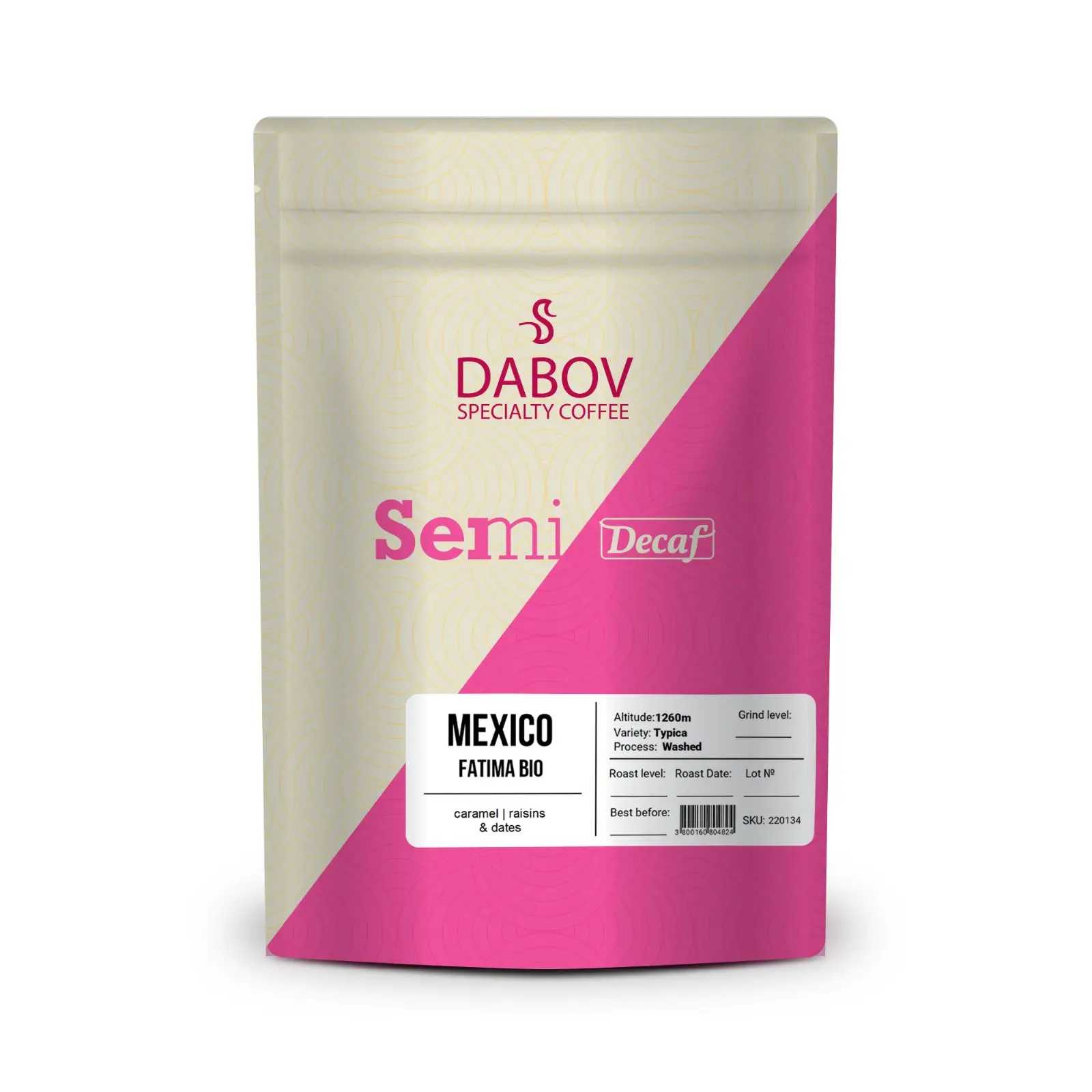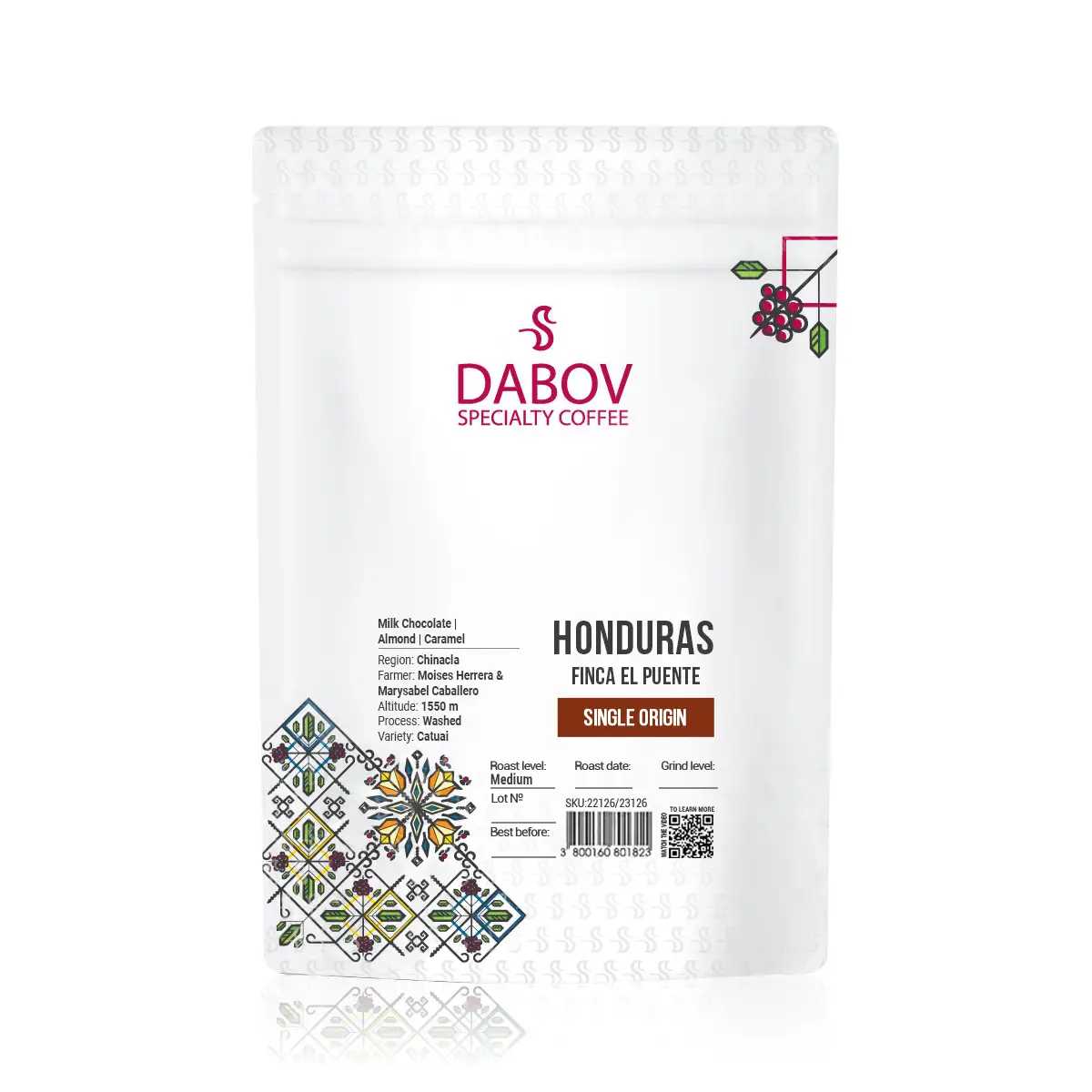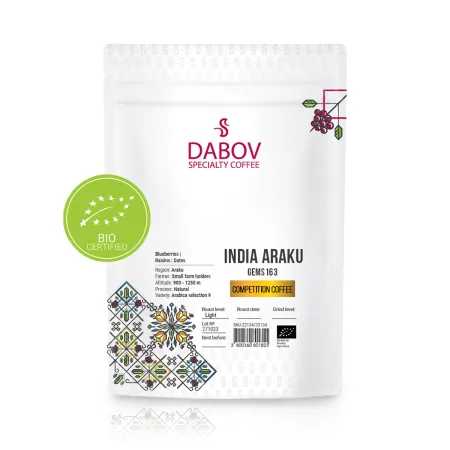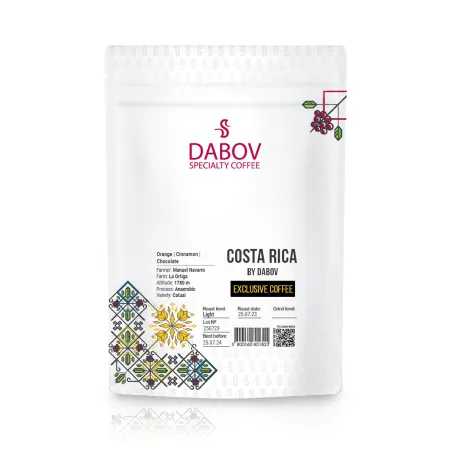The Impact of Community Support on Coffee Farms
Explore the transformative power of community support in coffee farming. This article delves into how local networks enhance sustainability, economic stability, and resilience among coffee farmers. Learn about various forms of support, from financial aid to emotional backing, and discover successful case studies that highlight the impact of community initiatives. We also discuss strategies for strengthening community ties and engaging local consumers to support sustainable coffee farming practices. Join us in understanding the vital role communities play in ensuring the future of coffee farming.
Coffee, a beverage that fuels millions of people worldwide, is more than just a morning ritual; it's a complex industry deeply rooted in community and agriculture. The coffee industry, valued at over $465 billion globally, not only impacts economies but also shapes landscapes and livelihoods across continents. At the heart of this vast network are the coffee farmers, whose success is increasingly dependent on the support of their communities. This article delves into the profound impact of community support on coffee farms, exploring how collective efforts are reshaping the future of sustainable coffee production.
Introduction
The aroma of freshly brewed coffee is a universal language, spoken in cafes, homes, and offices around the world. Behind every cup lies a story of dedication, hard work, and increasingly, community collaboration. As the coffee industry faces challenges ranging from climate change to market volatility, the role of community support in coffee farming has become more critical than ever. This support system, encompassing social, financial, and educational resources, is not just beneficial—it's essential for the sustainability and resilience of coffee farms globally.
Community support in coffee farming goes beyond mere neighborly assistance; it's a comprehensive approach that empowers farmers, enhances coffee quality, and promotes sustainable practices. As we explore this topic, we'll uncover how the strength of community ties directly correlates with the success and sustainability of coffee farms. The thesis of this article is clear: community support is not just important, but indispensable for the future of sustainable coffee farming.
1. Understanding Community Support in Coffee Farming
1.1 Definition of Community Support
Community support in the context of coffee farming refers to the collective efforts and resources provided by local groups, organizations, and individuals to enhance the well-being and productivity of coffee farmers. This support manifests in various forms, including financial assistance, knowledge sharing, labor exchange, and emotional backing. It's a holistic approach that recognizes the interconnectedness of farmers' success with the overall health of the community.
In coffee-growing regions, community support often takes on cultural significance, rooted in traditional practices of mutual aid and cooperation. For instance, in parts of Ethiopia, the birthplace of coffee, farmers participate in "debo," a system where community members collectively work on each other's farms during peak seasons. This practice not only provides crucial labor support but also strengthens social bonds and ensures that knowledge is shared across generations.
1.2 The Role of Community in Agriculture
Agriculture, particularly coffee farming, is inherently a community-based activity. The success of individual farmers is often tied to the collective knowledge, resources, and support of their community. In coffee-growing regions, community dynamics play a crucial role in shaping agricultural practices, from planting techniques to harvest methods.
Communities serve as repositories of traditional knowledge, preserving and passing down centuries-old farming techniques that are often uniquely adapted to local conditions. This collective wisdom, when combined with modern agricultural science, can lead to innovative and sustainable farming practices. Moreover, strong community ties facilitate the rapid dissemination of new information and techniques, allowing farmers to adapt quickly to changing conditions.
The community also plays a vital role in risk mitigation. In many coffee-growing regions, farmers face similar challenges, from pest infestations to market fluctuations. A strong community support system allows farmers to pool resources, share risks, and collectively problem-solve, enhancing their resilience in the face of adversity.
1.3 Key Forms of Community Support
Community support in coffee farming manifests in various forms, each playing a crucial role in the sustainability and success of coffee farms. These forms of support can be broadly categorized into social, financial, and educational resources.
Social support is perhaps the most fundamental form of community assistance. This includes labor sharing during peak harvest seasons, communal childcare to allow farmers to focus on their crops, and emotional support during challenging times. In many coffee-growing communities, social gatherings and ceremonies centered around coffee production serve to strengthen community bonds and provide a platform for knowledge exchange.
Financial support is another critical aspect of community assistance. This can range from informal lending networks to more structured microfinance initiatives. For example, in Colombia, groups of coffee farmers often form "fondos rotatorios" or rotating savings groups, where members contribute regularly and take turns receiving the pooled funds. This system provides farmers with access to capital for investments in their farms or to tide over lean periods.
Educational resources form the third pillar of community support. This includes farmer-to-farmer training programs, community-run agricultural schools, and partnerships with local agricultural extension services. In Uganda, for instance, the Hanns R. Neumann Stiftung foundation has implemented a "farmer field school" approach, where groups of farmers learn and experiment with new techniques together on demonstration plots.
These forms of support are not mutually exclusive but often intertwine to create a robust support system for coffee farmers. For example, a community-run coffee cooperative might provide social support through collective marketing efforts, financial support through access to credit, and educational support through training programs.
2. The Importance of Community Support for Coffee Farmers
2.1 Economic Stability
Community support plays a pivotal role in creating economic stability for coffee farmers, who often face volatile market conditions and unpredictable harvests. By fostering a network of mutual aid and resource sharing, communities create economic safety nets that help farmers weather financial storms and invest in their futures.
One of the most significant ways community support enhances economic stability is through the formation of coffee cooperatives. These organizations allow small-scale farmers to pool their resources, achieve economies of scale, and gain better bargaining power in the market. For instance, the Oromia Coffee Farmers Cooperative Union in Ethiopia, which represents over 300 primary cooperatives and 350,000 farmer families, has significantly improved the economic conditions of its members by securing better prices and providing access to international markets.
Community-based savings and credit associations also contribute to economic stability. These groups, often informal and rooted in local traditions, provide farmers with access to financial services that might otherwise be unavailable. In Rwanda, for example, "tontines" or rotating savings groups have been instrumental in helping coffee farmers save for large expenses and invest in their farms.
Moreover, community support can help diversify income sources, reducing farmers' vulnerability to coffee price fluctuations. Community-led initiatives that promote agroforestry or intercropping can provide additional income streams, making farmers more resilient to economic shocks.
2.2 Access to Resources
Access to essential resources is often a significant challenge for coffee farmers, particularly those in remote or underdeveloped regions. Community support plays a crucial role in bridging this gap, facilitating access to water, tools, and training that are vital for successful coffee cultivation.
Water access, for instance, is critical for coffee production, yet many farmers struggle with inadequate irrigation systems. Community-led water management projects can make a significant difference. In Costa Rica, the Aquiares Estate coffee farm has implemented a community-wide water conservation program, involving both farmers and local residents in protecting water sources and improving irrigation efficiency.
Access to tools and equipment is another area where community support shines. Many communities have established tool-sharing programs or equipment cooperatives, allowing farmers to access expensive machinery that would be out of reach for individuals. In Honduras, the COCAFCAL cooperative has set up a shared wet mill facility, enabling small-scale farmers to process their coffee cherries more efficiently and produce higher-quality beans.
Training and knowledge sharing are perhaps the most valuable resources that communities provide. Farmer-to-farmer training programs, where experienced growers mentor others, have proven highly effective. The Farmer-to-Farmer methodology, implemented by organizations like Catholic Relief Services in various coffee-growing countries, has shown remarkable success in disseminating best practices and innovative techniques.
2.3 Emotional and Social Support
The importance of emotional and social support in coffee farming cannot be overstated. Coffee cultivation is often a challenging and isolating endeavor, with farmers facing numerous stressors, from unpredictable weather to market uncertainties. A strong community network provides crucial emotional backing during these challenges.
Community gatherings, often centered around coffee-related activities, serve as important social outlets. These events, such as harvest festivals or cupping sessions, not only celebrate the community's shared heritage but also provide opportunities for farmers to connect, share experiences, and support each other. In Colombia, for example, the traditional "minga" practice brings communities together for collective work, fostering a sense of solidarity and mutual support.
Women's groups within coffee-growing communities have emerged as powerful sources of emotional and social support. These groups provide a platform for women farmers to share experiences, challenges, and solutions. The Café Femenino program, operating in several coffee-producing countries, has shown how women's cooperatives can empower female farmers, providing not just economic benefits but also emotional support and increased self-esteem.
Moreover, community support plays a vital role in preserving the cultural heritage associated with coffee farming. Many coffee-growing regions have rich traditions and rituals surrounding coffee production. By maintaining these practices collectively, communities provide a sense of identity and continuity that can be a source of strength and resilience for farmers facing modern challenges.
3. The Direct Impact of Community Support on Coffee Farming Practices
3.1 Sustainable Coffee Farming Practices
Community support has a profound impact on promoting and maintaining sustainable coffee farming practices. As global awareness of environmental issues grows, coffee communities are increasingly at the forefront of implementing eco-friendly cultivation methods. These practices not only benefit the environment but also often lead to higher quality coffee and improved long-term farm viability.
One of the most significant sustainable practices promoted through community support is agroforestry. This system, where coffee is grown under a canopy of shade trees, mimics natural forest ecosystems and provides numerous benefits. In El Salvador, the ACOES cooperative has implemented a community-wide agroforestry program, resulting in improved soil health, increased biodiversity, and enhanced coffee quality. The shade trees not only protect coffee plants from extreme weather but also provide additional income through fruit or timber production.
Organic farming is another sustainable practice that thrives with community support. The transition to organic methods can be challenging for individual farmers, but when undertaken as a community initiative, it becomes more feasible. In Mexico, the CESMACH cooperative in Chiapas has successfully transitioned to organic production, with farmers supporting each other through the certification process and sharing techniques for natural pest control and soil management.
Water conservation practices are also more effectively implemented with community backing. In Nicaragua, the SOPPEXCCA cooperative has initiated a community-wide water management program, involving both coffee farmers and local residents. This initiative has led to the protection of water sources, implementation of water-efficient processing methods, and overall improvement in water quality in the region.
3.2 Training and Education
Community-led educational initiatives have a significant impact on farming methods, often bridging the gap between traditional knowledge and modern agricultural science. These training programs, tailored to local conditions and needs, can lead to substantial improvements in coffee quality and yield.
Farmer Field Schools (FFS) are a prime example of community-based education in action. These schools, often run by experienced farmers or in collaboration with agricultural experts, provide hands-on training in best practices. In Tanzania, the Kilimanjaro Native Cooperative Union has implemented FFS programs that have significantly improved coffee yields and quality among participating farmers.
Digital technology is increasingly being leveraged for community-based training. In Colombia, the National Federation of Coffee Growers has developed a mobile app that provides farmers with real-time information on weather patterns, pest control, and market prices. This app, widely adopted through community networks, has empowered farmers to make more informed decisions about their crops.
Peer-to-peer learning is another powerful educational tool fostered by community support. In Rwanda, the Question Coffee initiative has established "Coffee Clubs" where farmers regularly meet to share experiences and learn from each other. These clubs have been instrumental in disseminating knowledge about quality improvement techniques and sustainable farming practices.
3.3 Knowledge Sharing and Innovation
The power of community in fostering innovation cannot be overstated. When farmers come together to share knowledge and experiences, it often leads to creative solutions and the development of new techniques tailored to local conditions.
In Costa Rica, the COOPEDOTA cooperative has become a global leader in carbon-neutral coffee production, largely due to community-wide efforts to innovate and share knowledge. Farmers within the cooperative collectively developed and implemented techniques to reduce carbon emissions throughout the production process, from cultivation to processing.
Innovation in post-harvest processing is another area where community knowledge sharing has made significant impacts. In Ethiopia, the birthplace of coffee, communities have long practiced traditional natural processing methods. However, through community-led experimentation and knowledge exchange, many regions have successfully adopted washed processing techniques, leading to more diverse flavor profiles and increased market opportunities.
The role of indigenous knowledge in innovation should not be overlooked. Many coffee-growing communities have centuries-old traditions of cultivation that are uniquely adapted to their local environments. When this traditional wisdom is shared and combined with modern scientific understanding, it often leads to highly effective and sustainable farming practices. In Peru, for example, indigenous Quechua communities have integrated their traditional agricultural calendar with modern climate data to develop more resilient farming systems.
4. The Positive Outcomes of Supporting Coffee Farmers through Community Initiatives
4.1 Improved Quality of Coffee
One of the most tangible outcomes of community support in coffee farming is the marked improvement in coffee quality. When farmers work together, share knowledge, and have access to better resources, the result is often a superior product that commands higher prices in the market.
Community-led quality improvement initiatives have shown remarkable success in various coffee-growing regions. For instance, in Rwanda, the Long Miles Coffee Project has worked with local communities to implement rigorous quality control measures throughout the production process. This community-wide focus on quality has resulted in Rwandan coffee gaining recognition in specialty markets worldwide, with some lots achieving scores of 90+ on the industry-standard 100-point scale.
The impact of community support on coffee quality is particularly evident in the rise of microlot coffees. These small, specially-processed batches of coffee represent the pinnacle of quality and often fetch premium prices. In Guatemala, the CODECH cooperative has implemented a community-based microlot program where farmers work together to produce and market these high-quality lots. This initiative has not only improved overall coffee quality but also significantly increased farmer incomes.
Moreover, community support often leads to increased biodiversity on coffee farms, which can positively impact coffee quality. In Colombia, the Coffee Cultural Landscape, a UNESCO World Heritage site, showcases how traditional community farming practices maintain a rich ecosystem that contributes to the unique flavor profile of Colombian coffee.
4.2 Socio-Economic Development
Supporting coffee farmers through community initiatives has far-reaching effects on the socio-economic development of entire regions. When coffee farmers prosper, the benefits ripple through the local economy, creating opportunities and improving living standards for many.
One of the most significant impacts is on education. Many coffee cooperatives reinvest their profits into community schools and scholarship programs. The Oromia Coffee Farmers Cooperative Union in Ethiopia, for example, has built numerous schools in coffee-growing regions, significantly improving access to education for farmers' children.
Healthcare is another area that sees improvement through community support of coffee farmers. In Nicaragua, the SOPPEXCCA cooperative has established health clinics in remote coffee-growing areas, providing essential medical services to farmers and their families who previously had limited access to healthcare.
Community support also often leads to infrastructure development. In Kenya, the Rumukia Farmers Cooperative Society has invested in road improvements, making it easier for farmers to transport their coffee and access markets. Such infrastructure improvements benefit not just coffee farmers but the entire community.
Furthermore, the economic stability provided by successful coffee farming can help stem rural-to-urban migration, preserving local cultures and traditions. In Mexico, the CESMACH cooperative's success has encouraged young people to remain in their communities and continue the tradition of coffee farming, rather than seeking opportunities in cities.
4.3 Resilience Against Climate Change
Perhaps one of the most critical outcomes of community support in coffee farming is increased resilience against climate change. Coffee is notoriously sensitive to temperature and rainfall changes, making it particularly vulnerable to the impacts of global warming. However, communities working together have shown remarkable adaptability in the face of these challenges.
Community-led climate adaptation strategies often involve diversification of crops and income sources. In Uganda, the Bukonzo Joint Cooperative Union has implemented a community-wide program to introduce drought-resistant crops alongside coffee, ensuring food security and additional income streams during challenging seasons.
Collective efforts in water management have also proven crucial in building climate resilience. In Costa Rica, the CoopeTarrazú cooperative has implemented a community-wide water conservation program, including the construction of water storage facilities and the implementation of efficient irrigation systems. These measures have helped farmers cope with increasingly unpredictable rainfall patterns.
Moreover, community support facilitates the rapid dissemination of climate-smart agricultural practices. In Peru, the CAC Pangoa cooperative has established demonstration plots where farmers can learn and experiment with climate-resilient coffee varieties and cultivation techniques. This community-based approach to innovation has enabled farmers to adapt more quickly to changing climatic conditions.
The power of community in facing climate challenges is perhaps best exemplified by the Coffee & Climate initiative, a global program that brings together coffee communities, researchers, and industry partners to develop localized climate adaptation strategies. This collaborative approach has led to the implementation of numerous successful climate resilience projects in coffee-growing regions worldwide.
5. Case Studies: Successful Community Support Models in Coffee Farming
5.1 Cooperative Farming Models
Cooperative farming models stand out as some of the most successful examples of community support in coffee farming. These organizations, owned and operated by farmers themselves, provide a range of benefits that individual farmers would struggle to access on their own.
One exemplary case is the Fairtrade-certified COCLA cooperative in Peru. Founded in 1967, COCLA now represents over 8,000 small-scale coffee farmers in the Cusco region. The cooperative provides its members with access to international markets, technical assistance, and financial services. COCLA's community-centered approach has led to significant improvements in coffee quality and farmer livelihoods. For instance, the cooperative's investment in centralized wet-milling facilities has enabled farmers to produce consistently high-quality coffee, commanding premium prices in the specialty market.
Another notable example is the Union of Indigenous Communities of the Isthmus Region (UCIRI) in Mexico. Established in 1983, UCIRI was one of the pioneers of the fair trade movement. The cooperative's community-based approach goes beyond coffee production, encompassing social programs, environmental conservation, and cultural preservation. UCIRI has established its own coffee roasting facility, allowing members to capture more value from their product. The cooperative also runs health clinics, schools, and a credit union, demonstrating how community support in coffee farming can lead to holistic development.
In Africa, the Kilimanjaro Native Cooperative Union (KNCU) in Tanzania provides another compelling case study. Founded in 1933, KNCU is one of the oldest coffee cooperatives in the world. The union has played a crucial role in supporting smallholder farmers through price fluctuations and changing market conditions. KNCU's community-based initiatives include a scholarship program that has enabled thousands of farmers' children to access higher education, contributing to long-term community development.
5.2 Community-Led Sustainability Initiatives
Community-led sustainability initiatives in coffee farming have gained significant traction in recent years, demonstrating the power of collective action in addressing environmental challenges.
The Asociación de Productores Ecológicos de Planadas (ASOPEP) in Colombia offers an inspiring example of community-driven sustainability. This association of organic coffee producers has implemented a comprehensive environmental program that includes reforestation, water conservation, and biodiversity protection. ASOPEP's members have planted over 100,000 native trees in their coffee farms, creating wildlife corridors and enhancing ecosystem services. The association also runs a community seed bank, preserving local plant varieties and promoting agrobiodiversity.
In Ethiopia, the Sidama Coffee Farmers Cooperative Union has spearheaded a community-wide initiative to combat deforestation and promote sustainable land use. The union has established community-managed nurseries that produce both coffee seedlings and native tree species. This initiative not only supports coffee production but also contributes to landscape restoration and carbon sequestration. The project has been so successful that it has been recognized by the United Nations Development Programme as a model for community-based climate action.
The Las Colinas cooperative in El Salvador provides another noteworthy example of community-led sustainability. Faced with declining soil fertility and increasing pest pressure, the cooperative's members collectively decided to transition to organic production. This community-wide shift involved extensive knowledge sharing, with experienced organic farmers mentoring others through the transition. The cooperative also established a communal composting facility, ensuring a steady supply of organic fertilizer for all members. As a result of these efforts, Las Colinas has not only improved its environmental sustainability but has also seen significant increases in coffee quality and farmer incomes.
5.3 Global Success Stories
The impact of community support in coffee farming extends beyond local and regional levels, with some initiatives achieving global recognition and influence.
The Coffee Quality Institute's Partnership for Gender Equity (PGE) project is a global initiative that demonstrates the power of community support in addressing gender inequalities in coffee farming. The project works with coffee communities around the world to promote gender equity and women's empowerment. In Nicaragua, PGE's collaboration with the SOPPEXCCA cooperative has led to increased participation of women in leadership roles and decision-making processes. This has not only improved the status of women in these communities but has also led to more diverse and resilient farming practices.
Another global success story is the work of World Coffee Research (WCR), an industry-supported non-profit organization that conducts collaborative research with coffee farming communities worldwide. WCR's International Multi-Location Variety Trial, involving over 20 countries, is a prime example of how global community support can drive innovation in coffee farming. This project brings together farmers, researchers, and industry partners to test and develop coffee varieties that are both high-quality and climate-resilient.
The success of the Relationship Coffee Model, pioneered by companies like Sustainable Harvest, showcases how community support can reshape global coffee supply chains. This model fosters direct, long-term relationships between coffee producers and buyers, often facilitated through producer cooperatives. In Rwanda, this approach has enabled smallholder farmers to access premium markets and invest in quality improvement. The Relationship Coffee Model has now been adopted by numerous companies and cooperatives worldwide, demonstrating its scalability and impact.
These global initiatives illustrate how community support in coffee farming can transcend geographical boundaries, creating networks of solidarity and shared knowledge that benefit coffee communities worldwide.
6. Strategies for Enhancing Community Support for Coffee Farmers
6.1 Building Stronger Networks
Enhancing community support for coffee farmers starts with building and strengthening networks within and between coffee-growing communities. These networks serve as conduits for information, resources, and mutual support, amplifying the benefits of community collaboration.
One effective strategy is the establishment of regional coffee farmer associations. These organizations can coordinate activities across multiple communities, facilitating knowledge sharing and resource pooling on a larger scale. In Colombia, the Colombian Coffee Growers Federation (FNC) exemplifies this approach. The FNC represents over 500,000 coffee-growing families, providing them with technical assistance, marketing support, and social services. The federation's extensive network allows for rapid dissemination of information and best practices across the country's diverse coffee-growing regions.
Another strategy is the creation of farmer-to-farmer mentorship programs. These initiatives pair experienced farmers with newcomers or those looking to improve their practices. In Uganda, the Hanns R. Neumann Stiftung foundation has implemented such a program, where "lead farmers" are trained to provide ongoing support and guidance to their peers. This approach not only transfers knowledge effectively but also strengthens social bonds within the community.
Digital platforms can play a crucial role in building stronger networks among coffee farmers. Mobile apps and online forums can connect farmers across vast distances, allowing them to share experiences and seek advice in real-time. The Coffee Cloud app, developed by the International Center for Tropical Agriculture (CIAT) and currently used in several Central American countries, is an excellent example. It provides farmers with weather forecasts, pest and disease alerts, and a platform for communication with other farmers and agricultural experts.
6.2 Involving Local Consumers
Engaging local consumers in supporting coffee farmers can create a powerful feedback loop that benefits both producers and their communities. Strategies to involve local consumers can take various forms, from educational initiatives to direct market connections.
One effective approach is the promotion of domestic coffee consumption in producing countries. In Brazil, the world's largest coffee producer, the Association of Brazilian Coffee Industry (ABIC) has run successful campaigns to increase local coffee consumption. These efforts not only create a more stable local market for farmers but also foster a deeper appreciation for coffee quality among Brazilian consumers.
Another strategy is the development of coffee tourism. By inviting consumers to visit coffee farms and participate in harvesting or processing activities, farmers can create additional income streams and build direct relationships with coffee drinkers. In Costa Rica, the Doka Estate offers popular coffee tours, allowing visitors to experience the entire coffee production process firsthand. Such initiatives not only provide economic benefits but also educate consumers about the challenges and complexities of coffee farming.
Farmers' markets and direct-to-consumer sales can also play a crucial role in involving local consumers. In Kenya, the Nairobi Coffee Exchange has opened its doors to small-scale roasters and consumers, allowing them to purchase coffee directly from producers. This initiative has created new market opportunities for farmers and increased awareness of Kenyan coffee quality among local consumers.
6.3 Leveraging Technology for Community Engagement
Technology offers numerous opportunities to enhance community support for coffee farmers. From mobile apps to blockchain systems, innovative technologies can facilitate communication, improve transparency, and streamline operations within coffee-growing communities.
Mobile technology, in particular, has shown great potential in supporting coffee farmers. Apps like Farmforce, used by coffee cooperatives in several countries, help farmers track their production, manage inputs, and access market information. These digital tools can significantly improve farm management and decision-making, especially when adopted at a community level.
Blockchain technology is emerging as a powerful tool for enhancing transparency and traceability in coffee supply chains. Initiatives like the IBM Food Trust blockchain are being used to track coffee from farm to cup, providing consumers with detailed information about their coffee's origin and journey. For farming communities, this technology can help build trust with buyers and potentially lead to better prices for high-quality, sustainably produced coffee.
Remote sensing and satellite imagery are increasingly being used to support coffee farming communities. In Colombia, the National Federation of Coffee Growers uses satellite data to monitor coffee plantations, detect diseases, and predict yields. This information is then shared with farmer cooperatives, helping them make informed decisions about planting, harvesting, and marketing their coffee.
Social media platforms also offer opportunities for community engagement and support. Many coffee cooperatives now use platforms like Facebook and Instagram to share updates, connect with consumers, and even sell their products directly. The COMSA cooperative in Honduras, for example, uses social media to showcase its sustainable farming practices and connect with specialty coffee buyers around the world.
7. Conclusion
The impact of community support on coffee farms is profound and multifaceted. From improving coffee quality and farmer livelihoods to enhancing environmental sustainability and resilience against climate change, the benefits of strong community networks in coffee-growing regions are clear and significant.
Throughout this exploration, we've seen how community support manifests in various forms – from cooperative farming models and sustainability initiatives to knowledge-sharing networks and technological innovations. These collective efforts not only address the immediate challenges faced by coffee farmers but also contribute to the long-term sustainability of the coffee industry as a whole.
The case studies and success stories highlighted in this article demonstrate that when coffee farmers come together, supported by their communities and connected to a global network of stakeholders, they can achieve remarkable results. From improving coffee quality in Rwanda to pioneering carbon-neutral production in Costa Rica, these examples show the transformative power of community support.
However, the work is far from over. As the coffee industry continues to face challenges such as climate change, market volatility, and generational shifts, the need for strong, supportive communities becomes even more critical. The strategies discussed for enhancing community support – building stronger networks, involving local consumers, and leveraging technology – offer pathways for continued progress.
As consumers, industry professionals, or simply coffee enthusiasts, we all have a role to play in supporting coffee farming communities. Whether it's choosing coffee from cooperatives that prioritize farmer welfare, participating in coffee tourism, or advocating for policies that support smallholder farmers, our actions can contribute to a more sustainable and equitable coffee industry.
In conclusion, the future of coffee farming lies not just in the hands of individual farmers, but in the strength of their communities. By fostering collaboration, sharing knowledge, and building resilience together, coffee farming communities can ensure that this beloved beverage continues to bring joy to millions while providing sustainable livelihoods for those who produce it. The cup of coffee we enjoy each morning is not just a product, but a testament to the power of community support in nurturing both the coffee plants and the people who tend them.




























